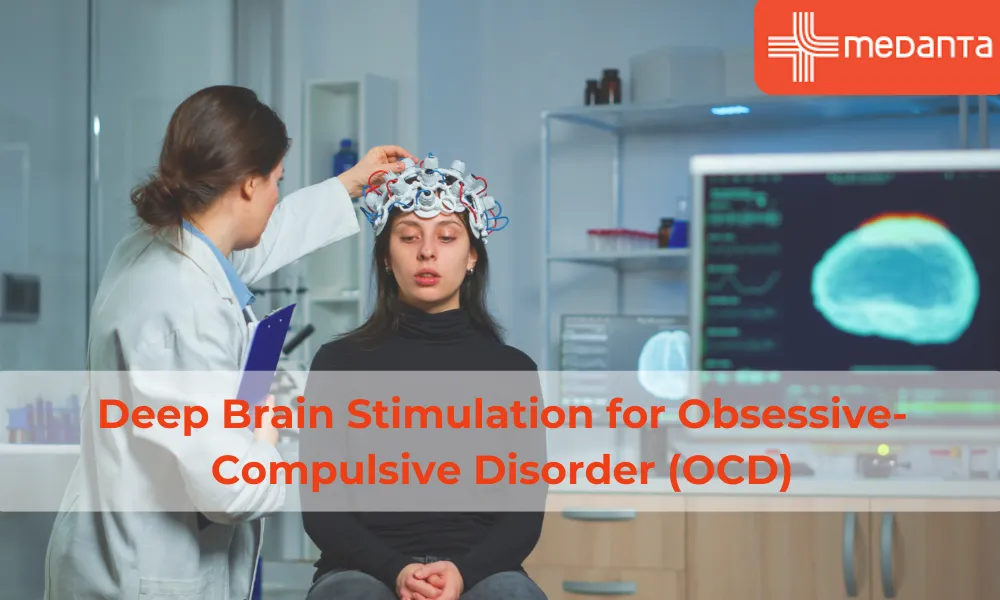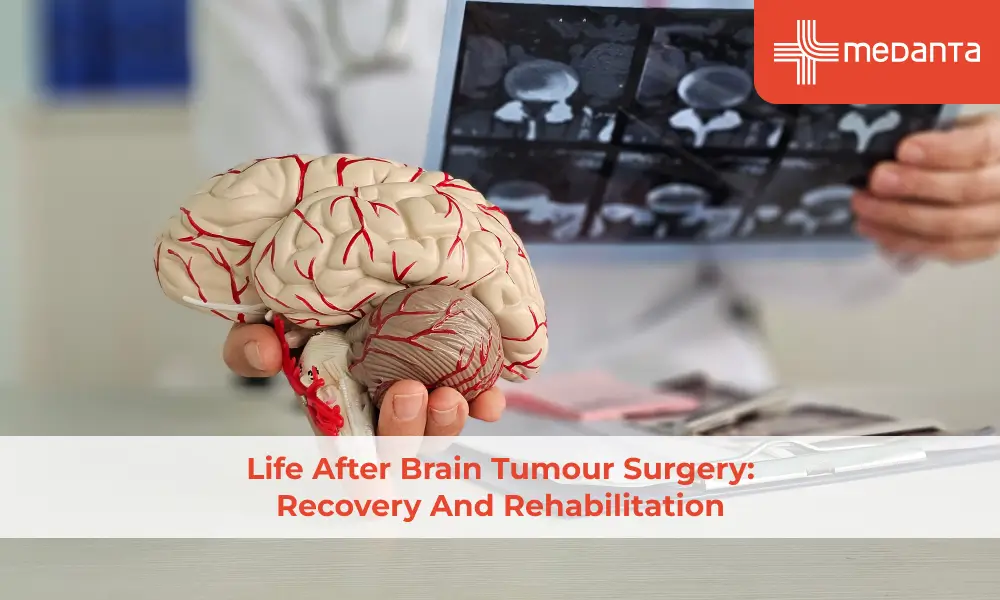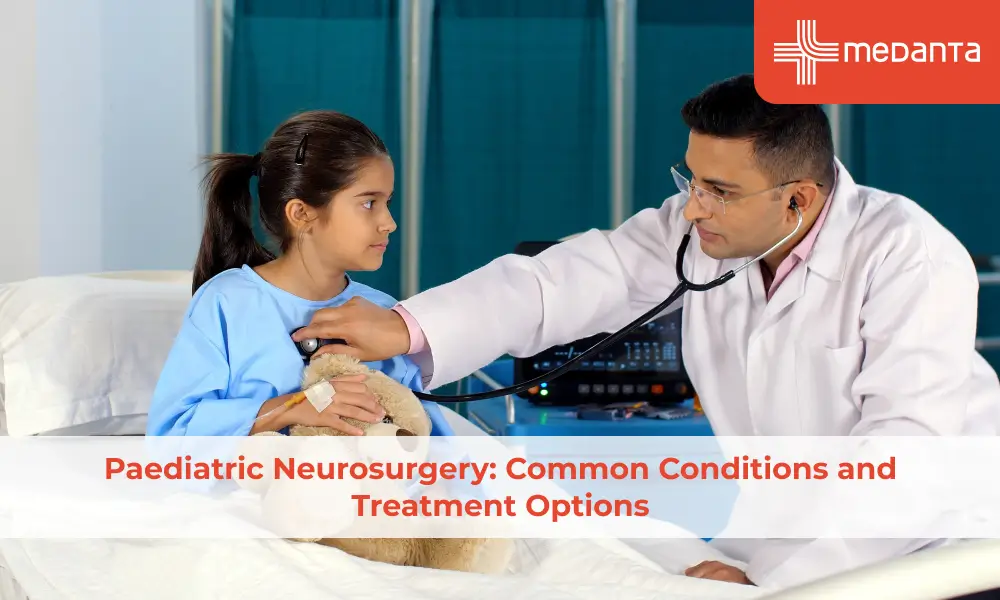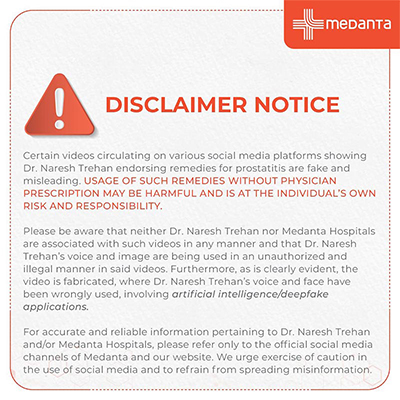Deep Brain Stimulation for Obsessive-Compulsive Disorder (OCD)

TABLE OF CONTENTS
According to a longitudinal study in JAMA Neurology, patients undergoing DBS for OCD experienced not only significant symptom relief but also a notable improvement in overall quality of life. Obsessive-Compulsive Disorder (OCD) is a challenging mental health condition affecting millions of people worldwide. Characterised by persistent intrusive thoughts and repetitive behaviours, OCD significantly impacts daily life.
While traditional treatments exist, a ground-breaking approach called Deep Brain Stimulation (DBS) is making waves in the field of psychiatry. In this blog, we’ll talk about the role of DBS in treating OCD, delving into its mechanisms, success stories, risks, and the promising future it holds.
Understanding OCD
OCD is a mental health condition that involves persistent, unwanted thoughts (obsessions) and repetitive behaviours or mental acts (compulsions). These can disrupt daily life, relationships, and overall well-being. Common obsessions include fears of contamination, doubts, or harming oneself or others. Compulsions often manifest as repetitive rituals or mental acts aimed at reducing anxiety.
Impact of OCD on Daily Life
OCD's effects go beyond the individual, impacting relationships, work, and personal life. Employment, relationships, and personal interests become challenging due to the time-consuming nature of compulsions. The stigma surrounding the disorder can lead to social isolation.
Conventional Treatments for OCD
OCD treatments like cognitive-behavioural therapy (CBT) and SSRIs may help, but some face limited relief or side effects. This emphasises the necessity for alternatives like Deep Brain Stimulation.
What is Deep Brain Stimulation?
Deep Brain Stimulation, a neurosurgical procedure, implants electrodes in specific brain areas. Connected to a pacemaker-like device, these electrodes deliver electrical impulses to regulate abnormal brain activity. Initially for Parkinson's, DBS holds potential for neurological and psychiatric issues, including OCD.
History and Development of DBS
The roots of DBS trace back to the mid-20th century when researchers explored the effects of electrical stimulation on the brain. The first significant use of DBS for movement disorders occurred in the 1990s. Over the years, technological advancements and a deeper understanding of brain circuitry paved the way for extending DBS applications to psychiatric disorders.
Mechanism of Action in the Brain
DBS operates on the principle of modulating abnormal neural activity. In the context of OCD, specific brain regions, such as the Ventral Capsule-Ventral Striatum (VC-VS), are targeted. By delivering electrical impulses to these areas, DBS aims to normalise the dysfunctional circuitry associated with obsessive thoughts and compulsive behaviours. The exact mechanisms are still under exploration, but the promising results have sparked interest in expanding DBS applications.
The Journey of DBS in Treating OCD
DBS proves effective for OCD, as shown by key research, like Greenberg et al.'s (2010) trial. Patients receiving DBS experience notable improvement in OCD symptoms compared to those with sham stimulation.
Comparison with Traditional Treatments
Comparing DBS to traditional treatments reveals both advantages and considerations. While medications and therapy remain primary interventions for many with OCD, DBS offers a unique approach for those who do not respond adequately to conventional methods. The invasiveness of the procedure and the potential for side effects must be weighed against the potential benefits, emphasising the importance of personalised treatment plans.
How Does DBS Work for OCD?
Target Areas in the Brain for OCD Treatment
Identifying the precise brain regions for DBS in OCD involves a thorough understanding of the neural circuitry implicated in the disorder. Current research suggests that targeting areas like the ventral capsule/ventral striatum (VC/VS) or the anterior limb of the internal capsule (ALIC) can yield positive outcomes. However, ongoing studies aim to refine these targets, optimising treatment efficacy.
Electrode Implantation Process
The surgical procedure for DBS involves implanting electrodes into the targeted brain regions. Surgeons employ advanced imaging like MRI and CT for precise electrode placement. The procedure, often done with the patient awake, ensures accurate targeting and minimises adverse effects.
Adjusting Stimulation Parameters
Fine-tuning stimulation parameters is a crucial aspect of DBS optimization. Neurologists work closely with patients to adjust the amplitude, frequency, and pulse width of electrical impulses, tailoring the treatment to individual needs. Regular follow-up appointments and ongoing monitoring help ensure optimal symptom relief while minimising side effects.
Risks and Considerations
Potential Side Effects of DBS
While DBS holds promise, it is not without risks. Potential side effects include surgical complications, infection, and, in some cases, mood changes or cognitive effects. These risks emphasise the importance of careful patient selection and thorough preoperative assessments. The multidisciplinary approach involving neurologists, neurosurgeons, and psychiatrists is essential in mitigating potential adverse outcomes.
Patient Selection and Eligibility Criteria
Determining the suitability of candidates for DBS involves a comprehensive evaluation of medical, psychiatric, and psychosocial factors. Individuals with treatment-resistant OCD who have exhausted conventional options may be considered for DBS. However, strict eligibility criteria help identify those who are most likely to benefit from the procedure, ensuring the responsible and ethical use of this intervention.
Ethical Considerations in Using DBS for Mental Health
The ethical implications of DBS in mental health are a subject of ongoing debate. Questions about autonomy, informed consent, and the long-term impact of altering neural circuits raise important ethical considerations. Balancing the potential benefits of DBS with the need for ethical safeguards is crucial to establishing responsible guidelines for its application in treating mental health conditions.
The Future of DBS in Mental Health
Ongoing Research and Developments
The field of DBS for mental health is dynamic, with ongoing research seeking to refine techniques and expand applications. Neuroscientists, clinicians, and bioengineers work together to enhance our grasp of the brain and improve DBS for psychiatric disorders. Imaging tech, neurostimulation devices, and personalised medicine advances will likely mould the future of DBS.
Expansion of DBS Applications Beyond OCD
DBS, promising in OCD treatment, is being researched for broader mental health conditions. Studies on major depression and addiction suggest DBS might transform psychiatry, offering hope for treatment-resistant patients.
Challenges and Opportunities in the Field
Refining targeting strategies, minimising side effects, and addressing ethical concerns pose challenges in the field. Yet, these challenges open doors for collaboration, innovation, and developing best practices. The growth of understanding in neural circuits and neurostimulation enhances the potential for DBS to be a mainstream therapeutic choice for mental health disorders.
Conclusion
Deep Brain Stimulation represents a potential mind-blowing frontier in the treatment of OCD. As our understanding of neural circuits and brain function deepens, DBS continues to emerge as a promising option for those who have not found relief through traditional treatments. While challenges and ethical considerations persist, the potential for DBS to revolutionise mental health care is undeniable.
As research advances and technology evolves, the landscape of psychiatry may witness a paradigm shift, offering new hope and possibilities for individuals grappling with treatment-resistant OCD and other mental health conditions.
If you or someone you know notice any symptoms of OCD, visit your nearest super-speciality hospital today!






